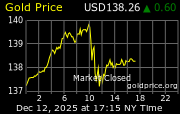Net speculative length for COMEX gold continued to climb over the past week. The change in the net position was once again the result of speculative longs added, while another mild increase in short positioning (2.6 tonnes) detracted somewhat from the overall improvement. The increase in net speculative length is not surprising, as futures market participants had positioned ahead of the ECB’s second LTRO on 29 February (the latest data covers the week ended 28 February, and therefore does not include the market’s reaction to Bernanke’s address).
However, this enthusiasm soon faded, as we saw last week Wednesday, which should be evident in this Friday’s release of CFTC numbers. ETFs ended the week with another gain of 8.5 tonnes to their gold holdings this past week. Perhaps some bargain-buying after Wednesday’s drop, lifted holdings. However, the increase is nothing remarkable, indicating that ETFs remain wary of gold. Given that we see fair value for gold at $1,640, we would look to establish tactical longs between $1,590 and $1,640. Longer term, we maintain that gold will reach new highs in 2012, probably towards Q3.
Turning to silver, net speculative length (COMEX) continued to improve, marking an eighth week of steady gains, with a dramatic 934.1 tonne increase. The improvement was the result of a remarkable rise in long positions — the largest gain since August 2011. Before last week Wednesday, futures market positioning
was the strongest it has been since the dramatic fall during late September of last year. This might explain why silver was not hit as hard as gold. Investors seem to have greater confidence in the possibility of further upside for silver.
Underscoring this confidence is the strong increase in silver ETF holdings. This past week, 144.0 tonnes were added. It appears that ETFs felt that, after Wednesday’s fall, it was the right level at which to get into silver.
Net speculative length as a percentage of open interest continues to climb and, at 21.6.1%, is well above the 2011 average of 15.7%. This is a clear indication of a market that is becoming overstretched and consequently vulnerable to correction. Despite the apparent investor enthusiasm, we believe that silver’s downside remains exposed (mainly due to Chinese inventories), to below $33/oz. We don’t believe that ral-






























